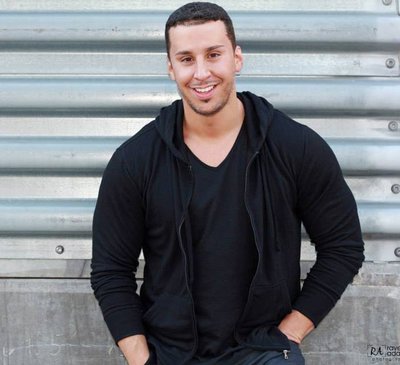For Union City resident David Sepulveda, finding a new, perhaps permanent solution to flooding due to storm surges like those in Hurricane Sandy led to he and his companions from New York Schools of Technology to become a finalists in the National Architectural Competition.
Sepulveda, Arianna Aremlli, and Ishaan Kumar are a team of New York architects who competed for the One Prize to find an original solution to a regional problem.
A graduate of North Bergen High School, Sepulveda said me met his co-designers at New York Institute of Technology (NYIT).
There, they decided to work together to enter the contest called One Prize 2013. This year, the contest focused on how to protect places like New York City and Hudson County from storm-related flooding.
The contest theme was selected to deal with issues created by Hurricane Sandy, seeking proposals who would explore the social, economic, and ecological possibilities of urban transformation while preparing for a recurrence in catastrophic weather.
“This year, because of Hurricane Sandy, storm-proofing became the theme.” — David Sepulveda
____________
One main concept of their entry had to do with using trash as a barrier to keep out the storm surge.
Using trash as a barrier
Sepulveda said the project, called “Contained,” was designed for the coast of New York City and based partly on political decisions made there over the last 10 years. He said the city rezoned much of the city to allow for greater population density, and more residential development in places formerly occupied by manufacturing.
“Most of the cities that were flooded came up with one-time solutions,” he said. “But we wanted to find something more than just sandbags.”
Their vision involved establishing a narrow canal around Manhattan, a kind of barrier reef or barrier island, made up of shipping containers filled with trash.
This would act as a floating landfill, which would serve as a storage area for trash while at the same time serving as a buffer against storm surges. The surface of these islands might even serve uses for new manufacturing.
While there are some issues involving toxic makeup of some trash, the team proposed monitoring of what kinds of trash get stored in the containers.
Sepulveda said this group has entered this contest before, looking for innovative uses of discarded things, such as new uses for abandoned buildings.
“This year, because of Hurricane Sandy, storm-proofing became the theme,” he said.
This was an international contest with more than 300 responses from people in over 60 countries.
“How do you storm-proof cities undergoing climate change?” he said. “In our proposal, we didn’t just want to barricade and block out water with concrete. We wanted a solution that was more sensitive to the environmental and economic conditions of New York. Since waste is one of the issues the city has to deal with, we wanted to combine that into a solution for flooding.”
Instead of waterproofing individual buildings, the team thought of using a portion of the river to provide the barrier. This would, they hope, establish its own eco system, a habitat for marine life similar to what occurs naturally in barrier reefs or islands.
“We know this is not feasible on a large scale, but we wanted to get people talking about it, and this has happened,” he said. “This is not a completely new idea. The MTA has dumped subway cars into the river in the past.”
New York City has not contacted them about the concept, Sepulveda said.
“But we got a lot of response from the architectural community,” he said. He hopes someone will take an interest in the concept.
Such concepts are not new even to Manhattan, a large percentage of which is already built on landfill.
“A third of Staten Island is landfill,” he said.
Sepulveda said he enters this contest every year, looking for solutions that will help the community or open people’s eyes to environmental situations.
Born in Queens, raised in Upstate New York, Sepulveda went to high school in North Bergen, and frequently takes the Boulevard East bus through West New York, North Bergen, and Weehawken, overlooking the water front.
“I’ve spent a lot of my life where and always studied New York, and I take some of these things personally,” he said.
Some of the problems facing society involve cross-discipline solutions, architecture combined with some biological elements.
“While I think like an architect, I don’t think of things in the same way as master architects like Frank Lloyd Wright did,” he said.
Al Sullivan may be reached at asullivan@hudsonreporter.com.
